Scientific name Morus Rank Genus | Phylum Chordata | |
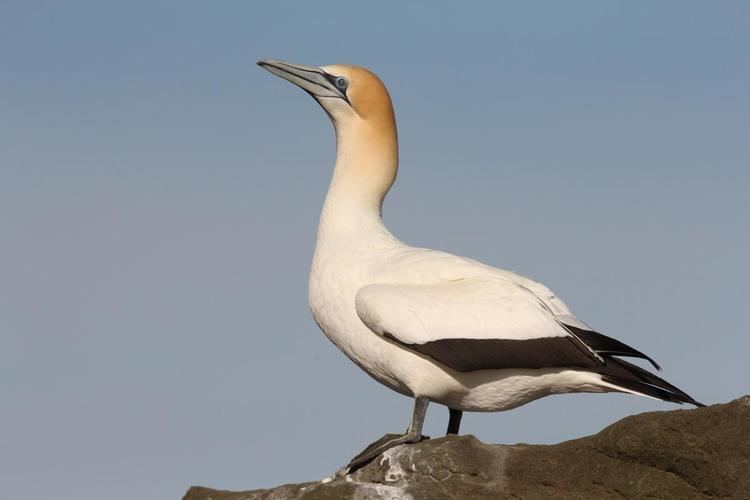 | ||
Lower classifications Northern gannet, Cape gannet, Australasian gannet, Red Mulberry, Morus serrata | ||
Gannets plunge into the sea
Gannets are seabirds comprising the genus Morus, in the family Sulidae, closely related to boobies. "Gannet" is derived from Old English ganot "strong or masculine", ultimately from the same Old Germanic root as "gander". Morus is derived from Ancient Greek moros, "foolish", due to the lack of fear shown by breeding gannets and boobies allowing them to be easily killed.
Contents
- Gannets plunge into the sea
- Torpedo gannet diving nature s great events w david attenborough bbc
- Mating and nesting
- Systematics and evolution
- References

They have a maximum lifespan of up to 35 years.
The gannets are large white birds with yellowish heads; black-tipped wings; and long bills. Northern gannets are the largest seabirds in the North Atlantic, with a wingspan of up to 2 metres (6.6 ft). The other two species occur in the temperate seas around southern Africa, southern Australia and New Zealand.
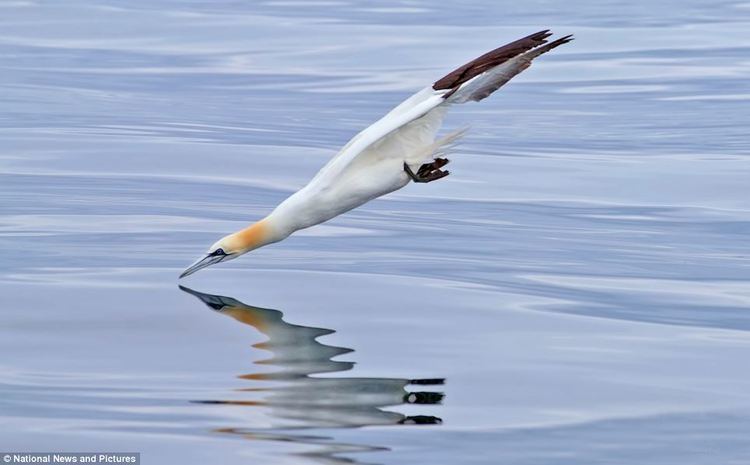
Gannets hunt fish by diving from a height into the sea and pursuing their prey underwater. Gannets have a number of adaptations which enable them to do this:
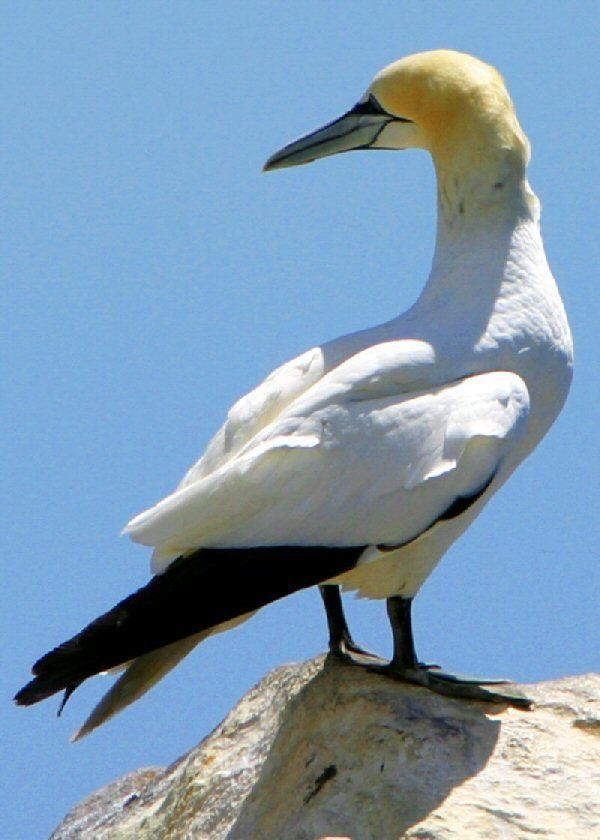
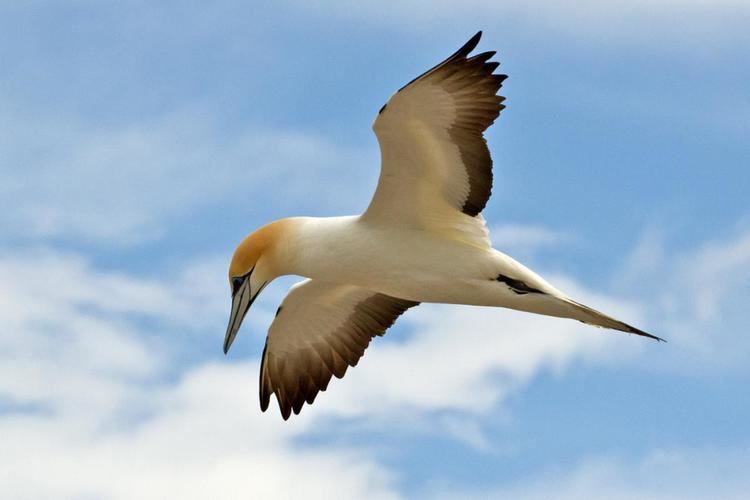
Gannets can dive from a height of 30 metres (98 ft), achieving speeds of 100 kilometres per hour (62 mph) as they strike the water, enabling them to catch fish much deeper than most airborne birds.
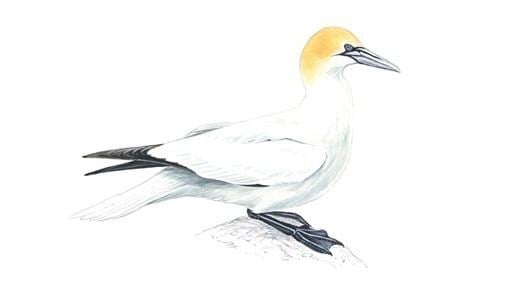
The gannet's supposed capacity for eating large quantities of fish has led to "gannet" becoming a disapproving description of somebody who eats excessively, similar to "glutton".
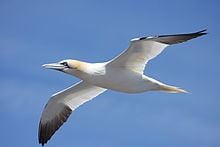
Torpedo gannet diving nature s great events w david attenborough bbc
Mating and nesting

Gannets are colonial breeders on islands and coasts, normally laying one chalky, blue egg. Gannets lack brood patches and they use their webbed feet to warm the eggs. It takes five years for gannets to reach maturity. First-year birds are completely black, and subsequent sub-adult plumages show increasing amounts of white.
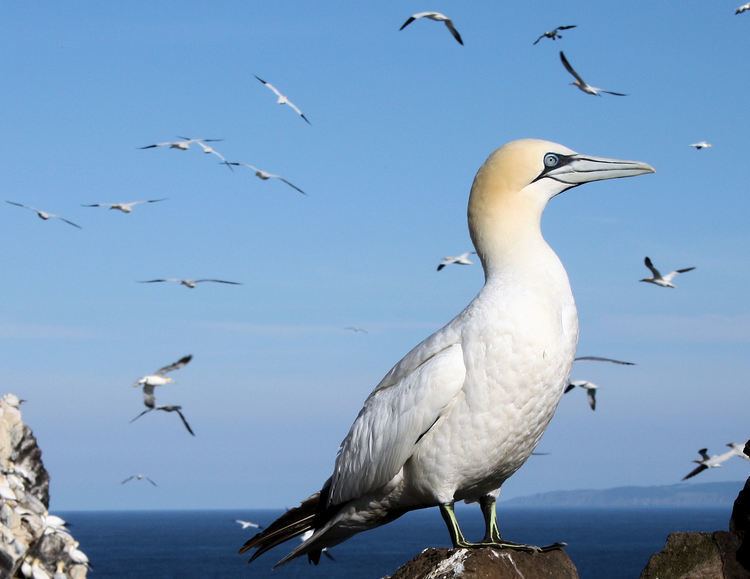
The most important nesting ground for northern gannets is the United Kingdom with about two thirds of the world's population. These live mainly in Scotland, including the Shetland Isles. The rest of the world's population is divided between Canada, Ireland, Faroe Islands and Iceland, with small numbers in France (they are often seen in the Bay of Biscay), the Channel Islands, Norway and a single colony in Germany on Heligoland. The biggest northern gannet colony is in the Scottish islands of St Kilda; this colony alone comprises 20% of the entire world's population. Sulasgeir off the coast of the Isle of Lewis, Bass Rock in the Firth of Forth, Grassholm in Pembrokeshire, Sceilig Bheag, Ireland and Bonaventure Island, Quebec are also important northern gannet breeding sites.
Systematics and evolution
The three gannet species are now usually placed in the genus Morus, Abbott's booby in Papasula, and the remaining boobies in Sula. However, some authorities believe that all nine sulid species should be considered congeneric, in Sula. At one time, the various gannet species were considered to be a single species.
Most fossil gannets are from the Late Miocene or Pliocene, a time when the diversity of seabirds in general was much higher than today. It is not completely clear what caused the decline in species at the end of the Pleistocene; increased competition due to the spread of marine mammals may have played a role.
The genus Morus is much better documented in the fossil record than Sula, though the latter is more numerous today. The reasons are not clear; it might be that boobies were better-adapted or simply "lucky" to occur in the right places for dealing with the challenges of the Late Pliocene ecological change, or it could be that many more fossil boobies still await discovery. Notably, gannets are today restricted to temperate oceans while boobies are also found in tropical waters, whereas several of the prehistoric gannet species had a more equatorial distribution than their congeners of today.
Fossil species of gannets are:
